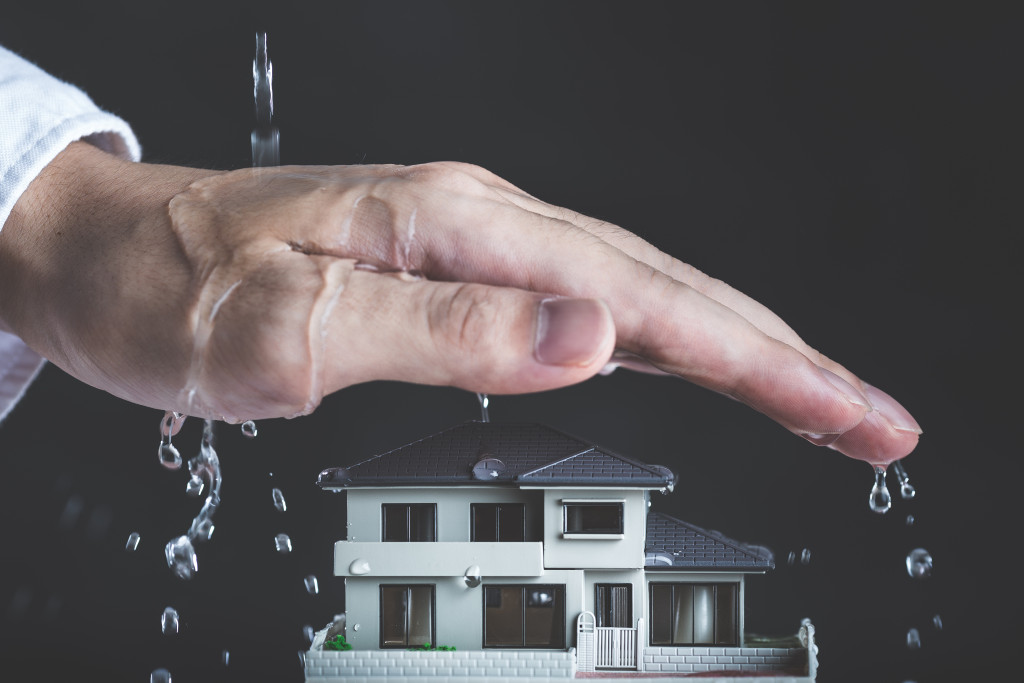- Understand potential risks associated with typhoon-prone areas, including strength, frequency, and seasonality.
- Have an evacuation plan in place and create an emergency kit with supplies such as canned food and a battery-powered radio.
- Get comprehensive home insurance to cover structural damage and personal belongings.
- Ask for help from water damage restoration professionals for repairs and mold remediation.
- Choose materials that are resilient and prioritize safety when building or renovating your home.
Moving to a new home is always a challenging experience, but when you add the risk of typhoons to the mix, things can get overwhelming. There’s no question that living in a typhoon-prone area comes with several potential hazards, including high winds, heavy rainfall, and flooding. However, if you know what to expect and prepare accordingly, you can minimize these risks and ensure that your home is a safe and comfortable place to live. Here are some essential tips on moving to a typhoon-prone area and protecting your house and family from these natural disasters.
Know the Risks
When moving to a typhoon-prone area, it’s crucial to understand what you’re up against. Typhoons can cause severe damage to homes, businesses, and infrastructure, and they can even be life-threatening in some cases. Here are some preventive things you can do:
Learn About the Potential Risks
Before you move to an area that is vulnerable to typhoons, it is crucial to understand the potential risks associated with the region. It is essential to research and be knowledgeable in terms of the records of typhoon strength, frequency, and seasonality in the area. Additionally, understanding potential evacuation routes and having an emergency plan in place are vital steps in preparing for a typhoon-prone site.
Have a Plan for Evacuation
When living in a typhoon-prone area, it is crucial to have a plan for evacuation and sheltering in place. If you are able to move away from the area before a typhoon hits, it is best to do so. Make sure to have supplies ready such as canned food, water, and flashlights — and practice your evacuation plan ahead of time.
Prepare an Emergency Kit
Creating an emergency kit is essential for any typhoon-prone area. The kit should include items such as flashlights, batteries, food, water, first aid supplies, and a battery-powered radio. It is also essential to consider things such as cash, blankets, tools, and copies of crucial documents.

Get Home Insurance
One of the best ways to protect your home from typhoon damage is to get comprehensive home insurance. A good insurance policy should cover not only structural damage but also personal belongings and any costs associated with temporary housing or displacement.
Shop around for policies that offer the coverage you need and ensure you understand your policy’s terms and conditions. For instance, some policies may exclude certain types of storm damage, so make sure you know what is and isn’t covered.
If possible, it is also a good idea to get an independent inspection of your home and its surroundings before moving in. This can help you identify potential risks such as weak trees, unstable structures, or possible flooding pathways.

Look for Water Damage Restoration Experts
When typhoons strike, one of the most critical steps in managing the aftermath involves finding effective water damage restoration services. Experts with water damage can ensure that your home is restored to its pre-typhoon condition and make sure that any structural damage is taken care of. Here are some benefits of asking for help from a professional restoration service:
Comprehensive Coverage
Professional water damage restoration services offer comprehensive coverage for any type of storm damage, including repairs to structural damage, removal of water and moisture buildup, and complete mold remediation. They also use specialized equipment such as thermal imaging cameras and moisture meters that can detect water intrusion in areas not visible to the naked eye.
Professional Experience
Water damage caused by typhoons can be a significant headache, but it doesn’t have to be when you enlist the help of an experienced water damage professional. These experts are trained to detect hidden moisture and structural issues that may have resulted from the storm, and they can also recommend proactive strategies for preventing further damage in the future. Water damage restoration experts can also help you get your home back to normal faster and more efficiently.
Knowledge of Regulations
It is essential to comply with the local regulations for water damage restoration. Different countries and regions have other laws and codes that must be followed when dealing with water damage repairs, so it is always best to consult a professional who is knowledgeable about these rules. Water damage professionals can also help you file the necessary paperwork and navigate the insurance process.
Moving to a typhoon-prone area can be a daunting prospect, but with the proper preparations and precautions, you can minimize the risks and enjoy your new home with peace of mind. By understanding the risks, getting home insurance, choosing the right materials, preparing your yard, and staying informed, you can protect your home and family from the effects of typhoons. Whether you’re building a new home or renovating an existing one, always prioritize safety and resilience, and you’ll be able to weather any storm that comes your way.

